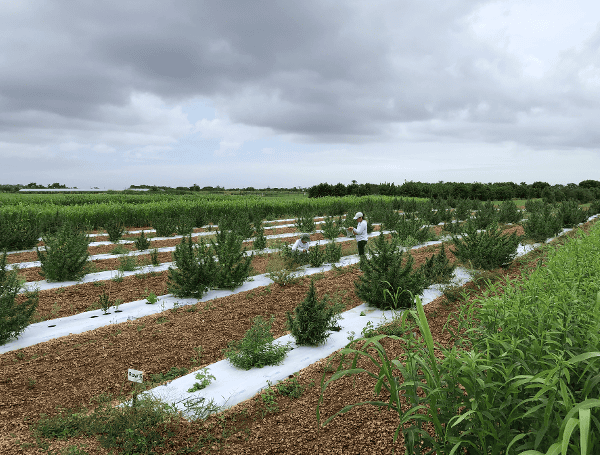
Forget just pretty pictures from above. A new University of Florida study is showcasing how drones, coupled with artificial intelligence, can become powerful allies for farmers, specifically helping to cultivate healthier and more productive hemp crops.
Researchers at the UF Institute of Food and Agricultural Sciences (UF/IFAS) Tropical Research and Education Center (TREC) in Homestead have successfully used drone-based imaging to fine-tune nitrogen fertilizer application, a crucial step towards optimizing growth, saving money, and protecting the environment.
READ: Florida Congressional Candidate Gets 3 Years for Threatening To “Disappear” Rep. Anna Paulina Luna
The study, led by Zack Brym, associate professor of agronomy at UF/IFAS TREC, addresses a key challenge for hemp growers: determining the precise amount of nitrogen needed for optimal plant health and flower production. Hemp, reintroduced to Florida’s agricultural landscape for research in 2019, offers a promising alternative crop with potential across various industries.
However, nutrient management, particularly nitrogen, is a delicate balance. Too little can lead to yellowing leaves, stunted growth, and reduced yields, while too much can result in excessive leafy material with minimal benefit to valuable flower production and risks environmental contamination through nutrient leaching.
“Farmers are looking for ways to assess their crops throughout the year to make informed fertilizer decisions,” said Brym. “We’ve shown that farmers with access to aerial images using red and near infrared (NIR) detection can spot differences in plant health by their color when scanning their fields.” This capability is especially vital in Florida, where Brym notes, “nutrients move through the soil so fast…farmers are applying fertilizer multiple times each year. Technology like the use of drone imaging will help determine how much fertilizer might be needed mid-season, promoting more efficient use of resources and supporting sustainable farming practices.”
READ: UF/IFAS To Host Florida Agricultural Policy Outlook Conference
Over three years, Brym’s team cultivated ‘Wife’, a popular floral hemp variety, applying six different nitrogen fertilizer rates, from none to very high. One month before harvest, drones equipped with multispectral cameras soared above the fields, capturing images that measured plant greenness and overall health.
These aerial assessments directly correlated with the actual amount of plant material harvested, revealing that a moderate nitrogen application – between 112 to 168 kilograms per hectare (approximately 100 to 150 pounds per acre) – yielded the healthiest plants and the most abundant flower production.
The research didn’t stop at image capture. Scientists employed artificial intelligence to process the drone data, specifically analyzing the canopy’s reflectance – the amount of light reflected off the plant surfaces. This data helps accurately identify and map canopy areas.
Tamara Serrano, a lead author and former agroecology graduate student on Brym’s team, shared her experience with the AI integration: “I was eager to see how effective the automated AI would be at identifying hemp canopy. To my surprise, the process wasn’t as seamless as expected and required manual corrections to address errors in canopy identification.”
READ: Reba Y. Mazak Named 2025 Florida Woman Of The Year In Agriculture
Despite these initial hurdles with AI, Serrano emphasized the study’s success. “Despite the challenges they faced with AI technology, weed intensity and weather, the data consistently demonstrated a strong positive correlation between canopy size and aboveground biomass across years,” she stated. “This shows that drone-based aerial imaging can effectively monitor crop growth and health in field-grown flower hemp and inform nutrient management decisions for growers.”
The implications of this research are particularly significant for Florida. The state’s fast-growing crops and shallow soils mean nutrients like nitrogen can easily be lost to runoff. By enabling in-season monitoring, drone technology offers growers a path to fine-tune fertilizer use, reduce waste, and bolster profits, all while championing environmental stewardship. As the hemp industry continues to find its footing, these technological advancements represent a valuable step forward in establishing sustainable and efficient farming practices.
Please make a small donation to the Tampa Free Press to help sustain independent journalism. Your contribution enables us to continue delivering high-quality, local, and national news coverage.
Connect with us: Follow the Tampa Free Press on Facebook and Twitter for breaking news and updates.
Sign up: Subscribe to our free newsletter for a curated selection of top stories delivered straight to your inbox.
